Update: ‘Design’ and ‘Release Date’ sections revised.
With the Ioniq 5 and Ioniq 6 out of the pipeline, the next big Hyundai EV debut is the Hyundai Ioniq 9. Here’s everything we know about the upcoming flagship Ioniq model designed for American families:
Ioniq 7 is now Hyundai Ioniq 9
Hyundai has confirmed that it is rebranding the Ioniq 7 into the Ioniq 9. Speaking at Hyundai’s 2024 CEO Investor Day, José Muñoz, Global President and Chief Operating Officer of Hyundai, explained:
We broke ground in October 2022, and began construction early last year for our new Metaplant facility that will be home to all of Hyundai Motor Company’s brands: Hyundai, Genesis, as well as Kia. HMGMA will have a capacity of 300,000-500,000 vehicles per year, and will produce our award winning Ioniq 5, as well as our highly anticipated brand new, three-row fully-electric SUV, Ioniq 9.
José Muñoz, Global President and Chief Operating Officer of Hyundai, at the 2024 CEO Investor Day, on August 28, 2024
At the group level, we believe that the Hyundai Ioniq 9 name will help customers more clearly understand that this model belongs to the same vehicle segment as the Kia EV9 and the upcoming Genesis GV90. Additionally, the name change will create additional space for new Ioniq electric models in the Hyundai range.
Design
The Hyundai Ioniq 9 will be an interesting amalgamation of traditional SUV styling with modern SUV characteristics. It will sit close to the ground and feature a sloping roofline and a slightly hunched tail section.

Hyundai has proven that it can design production EVs very close to concept versions and still offer them at a fair price. As radical as the Seven concept (detailed in the following section) may look, the Ioniq 9 will not be far from it. Munoz straight out told MotorTrend that the production version would be “pretty close,” so close that we’ll be “amazed.”
Concept-like body
Spy photos confirm that the Ioniq 9 will retain key design elements from the Seven Concept, including square-shaped wheel arches (in black, not body color), a sloping roofline, significantly angled A-pillars, integrated roof rails, and an expansive windshield.
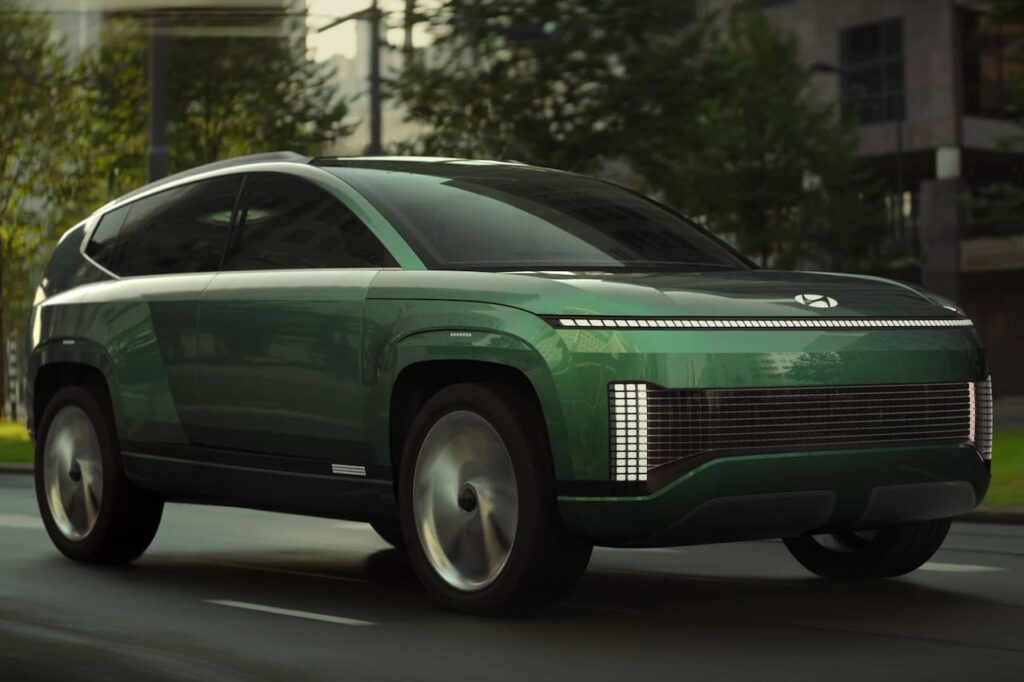

Lighting
As seen in the spy picture above, the Ioniq 9 will feature Hyundai’s newest interpretation of two-tier headlights. It will have an end-to-end daytime running light stripe at the tip of the hood, emphasizing its width. The low- and high-beam lights are stacked vertically at the extreme ends of the bumper, and they should provide excellent visibility, thanks to a new technology, which we’ll get to in just a bit.
The Ioniq 6 features over 700 Parametric Pixels in multiple places, such as headlamps, rear combination lamps, front lower sensors, air vent garnishes, and console indicator. Considering the Ioniq 9’s size, it may integrate more. Cool Hunting reported on August 24, 2022, that the Ioniq 9 will feature seven pixels on the front spoiler to display the charging status.
Wheel & tires
Hyundai will likely offer the Ioniq 9 with multiple wheel and tire options. Recent spy pictures (via Naver/prayforwish) have shown the company using 19-inch wheels wrapped in Kumho Ecsta 255/60 R19 tires and 21-inch wheels wrapped in Michelin Primacy Tour A/S 285/45 R21 tires on test mules. While the 19-inch wheels appear small for an SUV of this size, they can maximize range.
Unique rear-end
The production model will mimic the rear-end of the Seven Concept, featuring an arch-like structure around the roof and pillars, featuring LEDs in select portions. The tailgate and pillars are unique in the way that it’s not upright and angled inwards like traditional SUVs or coupe-crossovers, rather falling backwards, which creates a unique design and could open up to a large boot space.
Body fitments
We also expect flush door handles and camera-based digital side mirrors, although the availability of the latter will depend on local regulations. The U.S. won’t be among the countries getting this feature. The backup camera will likely be located not in the license plate area like on the Palisade and most other SUVs, but much higher, towards the bottom edge of the glass. The tail lamps seem to be vertical units.
Paint
Hyundai will adopt several eco-friendly measures for the Ioniq 9’s exterior. Like on the Ioniq 6, it may use recycled pigment paint from end-of-life tires on the cladding and bamboo charcoal pigment paint on the body. The company would offer the Ioniq 9 in several paint options, including a few particularly bright and unique shades that help it stand out from the lot. Recently, we spotted a test mule in South Korea finished in a color similar to the second-gen Kona‘s Mirage Green color.
Hyundai Ioniq 9 vs Kia EV9
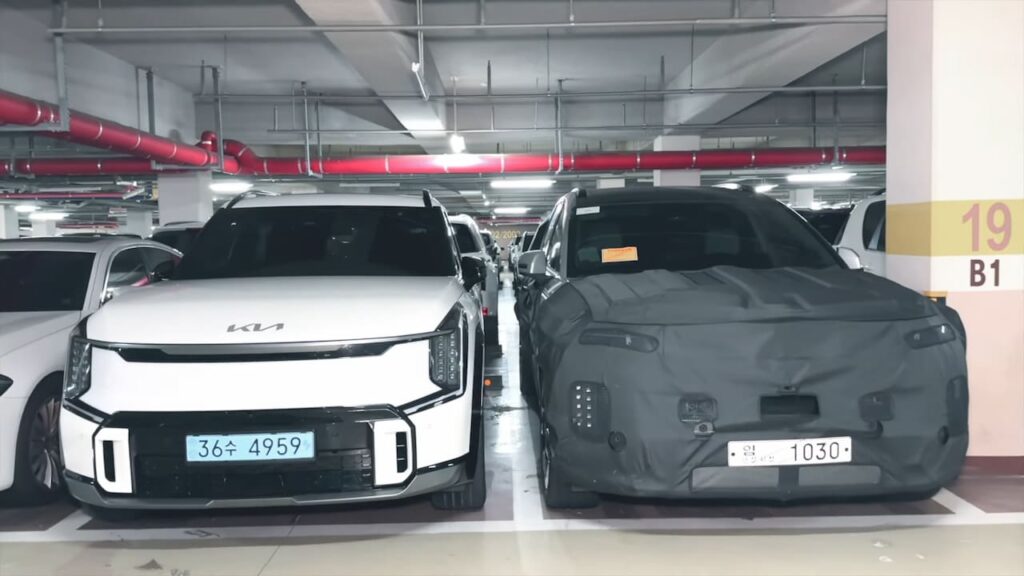
The Ioniq 9 appears to have a more aerodynamic design than the Kia EV9. On August 23, 2023, YouTube channel 뻥태기 posted a spy video showing a camouflaged Ioniq 9 parked next to the Kia SUV. Its A-pillar appears slightly lower, making the windshield look more raked and the entire front section more aerodynamic. In addition to a sportier style, this difference may result in reduced air drag, which has a positive effect on the range.
While the EV9 has a flat roof, the Ioniq 9 features a curvy roof that drops from behind the B-pillar. The latter also looks visibly longer than the former, as expected from its significantly longer wheelbase.
Interior
The interior of the Ioniq 9 will likely be just as futuristic and minimalist as the exterior. In the spy shots, the interior looks similar to that of the 2024 Santa Fe. Its dual-display setup for the instrument cluster and infotainment system, chunky string wheel, and power-operated steering column look similar to this model. The electric SUV features a Bose audio system with a pixel-like pattern in the grille of the speakers.
Unlike the Seven concept, which features a joystick, the Ioniq 9 has a regular steering wheel (view on YouTube), which looks the same as that of the 2024 Santa Fe. The steering wheel features three types of analog controls on the spokes: buttons, silver toggle switches, and silver knurled scrollers.
It also has an electronic gear selector, which is located on the right side of the column and features a metallic finish. Slim central AC vents, a metallic speaker grille, and thin buttons add to the sleek and luxurious look of the interior.
The extensive use of white or light gray in the interior exudes a sense of cleanliness, luxury, and purity. Additionally, the use of alternative materials in the cabin, with an emphasis on sustainability, should contribute to the touch and feel, further enhancing the unique experience for occupants.
Physical buttons
Hyundai has used analog controls in many other places as well. These include temperature control dial(s), airflow direction adjustment flaps, hazard light button, Home, Map, Search, Media, etc. switches for the infotainment system, and what looks like a volume scroller that can double as a push-operated power button for the infotainment system.
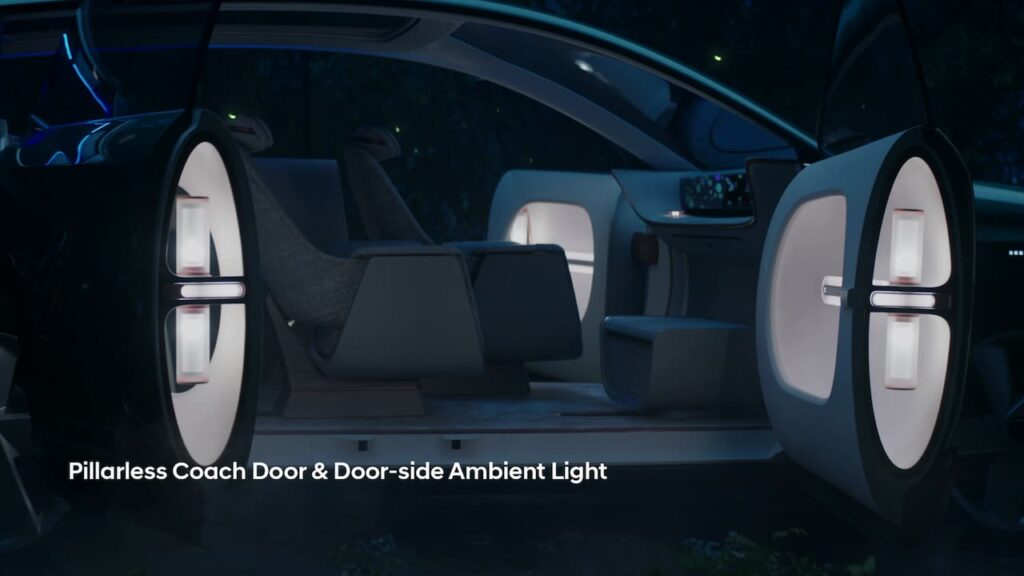
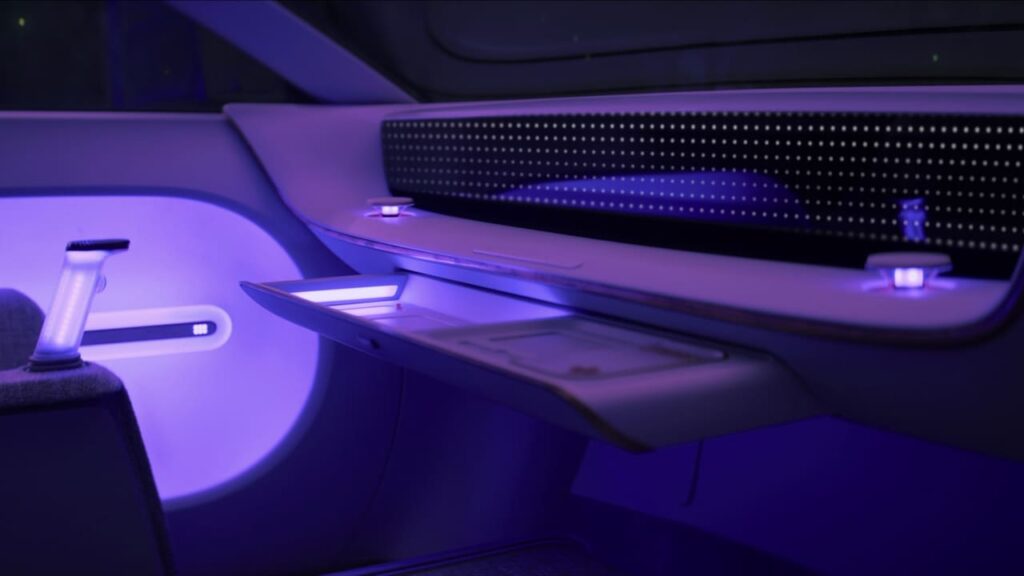
Rounded elements
Recent spy shots reveal typical Ioniq (EV) series features, including many rounded elements, such as the door handles, and light upholstery colors. A white center console, featuring two big cup holders, a wireless smartphone charger, and a silver toggle switch (likely for drive mode), was also visible. Based on these spy photos, it appears that the second row offers ample shoulder room to comfortably seat three adults.
MotorTrend received information that the interior will have extensive changes. SangYup Lee, Executive Vice President and Head of Hyundai Global Design Center, has said that the company envisioned the Seven concept for the fully autonomous driving future, and hence the interior “is a little more visionary.”
Gil Castillo, senior group manager, Alternative Vehicle and Advanced Vehicle Strategy, Hyundai Motor North America, told MotorTrend that Hyundai can carry over the concept’s Vision Roof Display to the Ioniq 9. However, offering this feature might not make sense now, Castillo said. The company used it in the concept only to explore how far it could stretch to convert an EV into a living space when fully autonomous driving becomes commonplace.
Swiveling seats
Among the features that we expect to see in the production model is the swiveling rear seat. However, there might be two of them instead of just one.
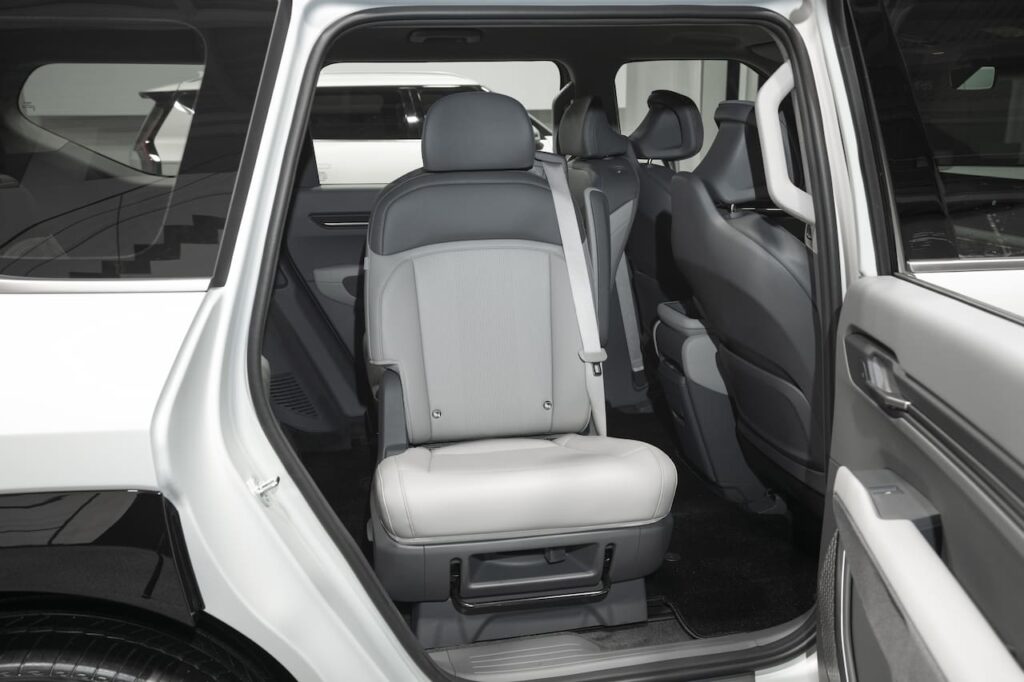
Hyundai could offer lounge-style swiveling second-row seats in a comfort-focused version that accommodates six people. The swiveling seats may allow the rear-seat passengers in the second and third rows to sit face-to-face, and that’d be particularly useful for business executives and VIPs trying to make the best out of their travel time. A more practical seven-seat version with a standard bench will likely be the default configuration, though.
The third-row passengers are unlikely to feel left out of features, as Hyundai should offer cup holders and mobile charging ports for them, too.
‘Phygital’ interior
Another highlight of the interior could be a new display concept in which there’s a dedicated climate control display placed between the instrument cluster and the infotainment system. A mix of a dashboard-integrated touch-controlled panel and physical controls like buttons and knurls should allow accessing the various functions of these displays.
Specifications
We’re expecting the Hyundai Ioniq 9 to come in two-wheel drive and all-wheel drive configurations. The flagship Hyundai EV is expected to offer a ground clearance of around 8 inches.
Battery & Charging
The Hyundai Ioniq 9 may use the same core components as the Kia EV9, its closest platform-mate. The E-GMP-based electric three-row SUV may come with two lithium-ion battery pack options: 76.1 kWh and 99.8 kWh. Both battery packs, thanks to a high voltage of ~800 volts, may take just around 25 minutes for a 10-80% fast-charging session with a 350 kW charger. The charging port will likely be located on the right side at the rear.
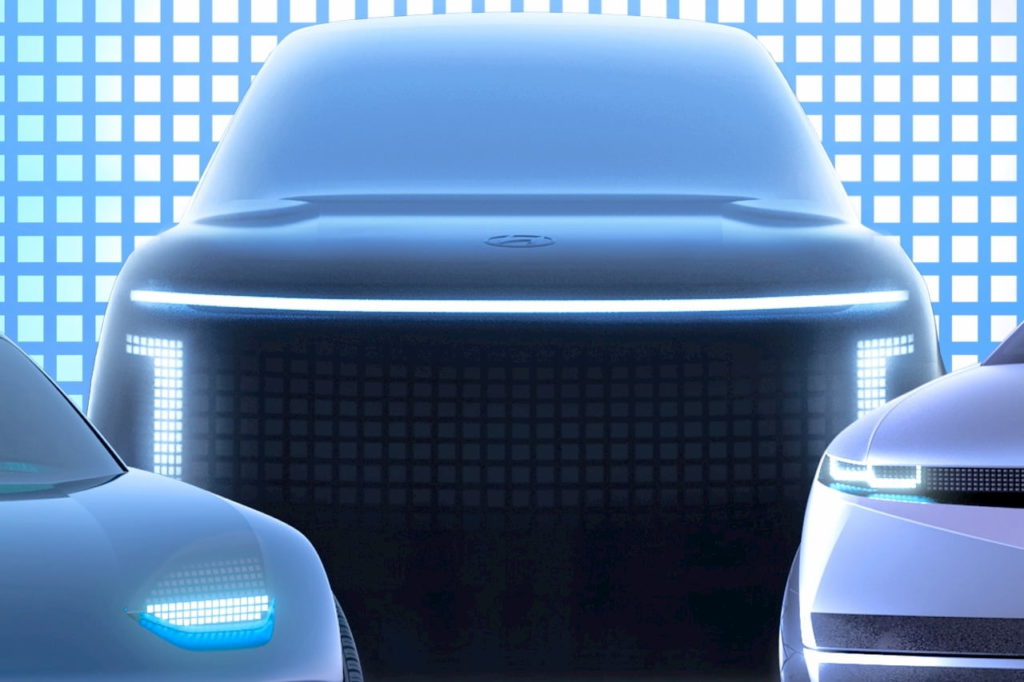

RWD
Three powertrain configurations could be available at launch, two RWD and one AWD. The base Ioniq 9 RWD may have a single, rear-mounted motor that produces 150 kW (201 hp) and 350 Nm (258 lb.-ft.). The top-end Ioniq 9 RWD may sport a high-power, 160 kW version (214 hp) of the same motor, with the same torque.
The basic RWD configuration of the Ioniq 9 will likely share the 76.1 kWh battery pack. In that case, Hyundai may target an EPA-est. range of around 230 miles for this version. As for the long-range variant with the bigger battery, it could easily achieve 300 miles on a single charge.
AWD
The Ioniq 9 AWD should combine a 141 kW (189 hp)/250 Nm (184 lb.-ft.) front motor and a 141 kW (189 hp)/350 Nm (258 lb.-ft.) rear motor, resulting in combined power and total torque ratings of 283 kW (379 hp) and 600 Nm (443 lb.-ft.), respectively. It may have a boost function that increases the system torque to 700 Nm (516 lb.-ft.) for short bursts. A 99.8 kWh battery pack will likely supply energy to the high-output motors of the Ioniq 9 AWD, with the range expected in the 270-280 miles range.
| Aspect | Hyundai Ioniq 9 Specification (Expected) |
| Wheelbase | 3.2 meter (126 in.) |
| Driveline | RWD/AWD |
| Max. System Power | Up to 283 kW (379 hp) |
| Max. System Torque | Up to 700 Nm (516 lb.-ft.) |
| Battery Pack Capacity | Up to 99.8 kWh |
| Top speed | 124 mph |
| Range (EPA) | Up to ~300 miles |
| Peak DC Charging Power | 350 kW |
| Peak AC Charging Power | 10.5 kW |
| 10-80% DC Fast-Charging Time | ~25 minutes |
| AC Charging time | 7-9 hours |
| V2L | Yes |
Improved power module
Hyundai’s E-GMP platform will soon benefit from new silicon-carbide (SiC) power modules, according to a press release by STMicroelectronics dated December 7, 2022. The ACEPACK DRIVE SiC-MOSFET Gen3 power modules will deliver higher performance and longer driving range over previous-gen units. Of the five modules, three have already entered full-scale production – the remaining two will do so by March 2023.
Equipped with the company’s “sintering technology”, these new modules will be more reliable and robust than ever. Apart from their improved energy efficiency and higher power density, the ‘plug-and-play’ third-gen modules support direct liquid cooling and can handle charging voltages of up to 1200 volts. It’s truly possible that all (current and future) E-GMP models from Hyundai and Kia will get them, thereby benefiting from shorter charging periods, higher maximum range, and improved overall performance.
Features
New ambient lighting
We expect the Ioniq 9 to feature Dual Color Ambient Lighting that allows customers to choose from 64 single colors and six dual theme colors. As with the Ioniq 6, this feature could be paired with a Speed Sync Lighting mode that adjusts the brightness of the interior lighting in the first row according to the vehicle’s speed.
Advanced and recycled materials
Thanks to the premium positioning, it might be possible for Hyundai to use newly developed high-tech materials on the Ioniq 9. One of the many innovative features of the large electric SUV could be paints and trims that serve more than just aesthetics.
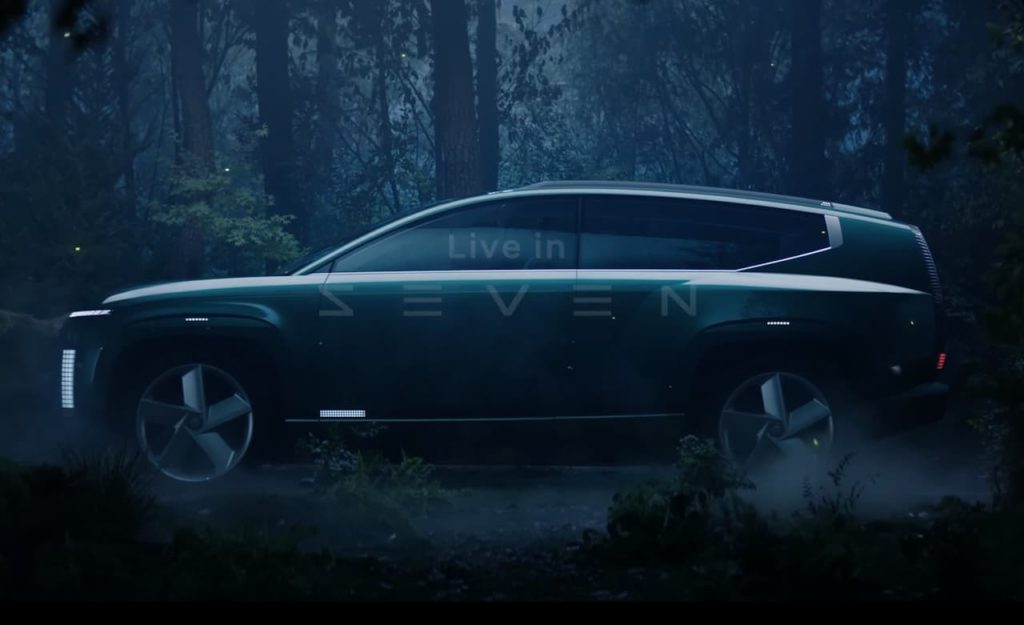
Several interior touchpoints, such as door trim, headliner, seats, armrest, and floor, could be made from eco-friendly and sustainably sourced materials. Plant-based (bio PET) yarns and natural wool yarns, recycled PET bottles, bio paint with plant extracts, recycled fishing net carpet, and artificial leather with plant-based extracts could be some of the eco-friendly and sustainably sourced materials.
The Ioniq 6 is the first Ioniq model in which Hyundai has used recycled fishing net carpet. Moreover, the company has applied eco-process leather and recycled PET fabric for its seats, bio TPO skin for its dashboard, and bio paint derived from vegetable oils for the doors. The electric sedan’s headliner also sees the usage of recycled PET fabric.
Electric Active Sound Design (e-ASD)
In addition to Speed Sync Lightning, Electric Active Sound Design (e-ASD) could help make the driving experience exciting. e-ASD emits a spacecraft-like driving sound through the speakers based on the speed of the vehicle, the torque state of its motor, and the intensity with which the driver pushes the accelerator pedal.
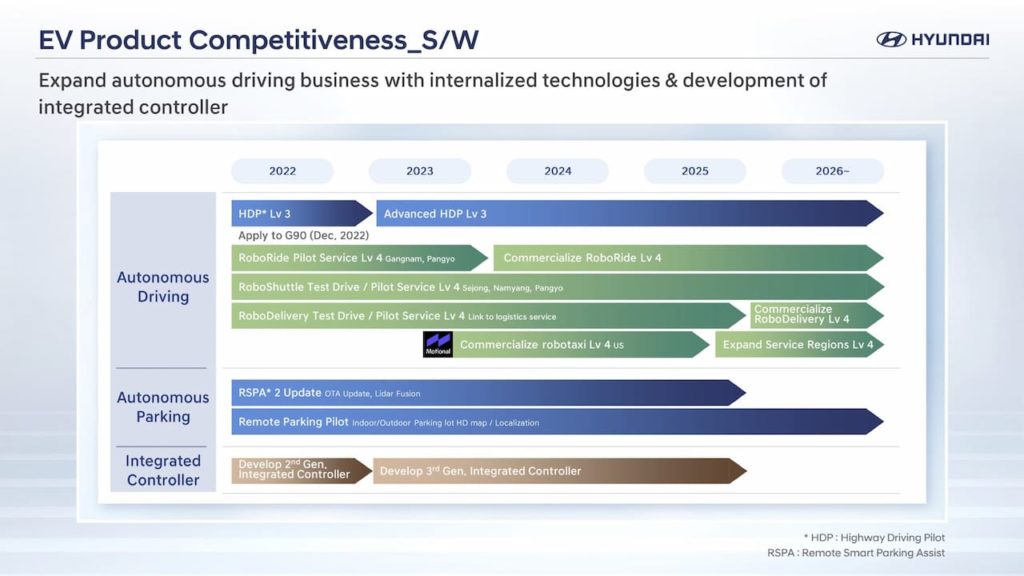
Highway Driving Assist 2
The lower variants of the Ioniq 9 should have semi-autonomous driving features of the Hyundai Ioniq 5. The electric crossover comes with Highway Driving Assist 2 (HDAII), Forward Collision-Avoidance Assist (FCA), Intelligent Speed Limit Assist (ISLA), and many more advanced driver assistance systems. Remote Smart Parking Assist (RSPA) that lets the driver remotely park or exit a parking spot for parallel and perpendicular parking should also be included in the list of autonomous driving functions.
Digital Key
Another highlight of the Hyundai Ioniq 9 could be the next-gen Digital Key. Hyundai’s current Digital Key technology allows users to unlock and start their Hyundai via their smartphone. The Digital Key is downloaded via a smartphone application and can be used by up to four authorized people.
Currently, the user must hold the smartphone with the Digital Key against the driver or front passenger door handle to unlock the car. The Hyundai Ioniq 9 could come with the more advanced Digital Key 3.0 that needs the user’s smartphone to be in enough proximity to the vehicle for a specific time period to unlock the doors. It provides passive access where the user would not need to lift the smartphone out of the pocket or bag.
Wireless Apple CarPlay & Android Auto
In an announcement in September 2023, Hyundai confirmed that it will offer wireless connectivity for Android Auto and Apple CarPlay in the future through a software update for models including the Ioniq 5. We’re expecting this feature to be factory-installed in the Ioniq 9.
V2L (Vehicle to Load)
One of the first features of the Ioniq that 5 Hyundai featured in its marketing campaign was V2L. This utility feature should be available even in the Ioniq 9. V2L allows using the electrical energy stored inside the vehicle’s battery pack to power external devices like domestic appliances, camping equipment, consumer electronics, etc. With V2L, one can also charge another EV’s battery pack. In the U.S., the peak power available in the Ioniq 5 for V2L functions is 1.9 kW instead of 3.6 kW globally.
Vision roof
The Hyundai Ioniq 9 should eventually feature a large panoramic sunroof called ‘Vision roof.’ The mid-size electric SUV’s ceiling may consist of one large glass panel without cross members so that the occupants can enjoy an uninterrupted view of the night sky. This feature will not be available at launch.
Virtual mirrors
In some markets, including South Korea, where regulations permit, Hyundai will offer the Ioniq 9 with virtual mirrors. Cameras are mounted in place of traditional mirrors made of glass, and their feed is displayed on two screens mounted, usually on the front door panels or the corner of the dashboard/A-pillars.
LG home appliances in the Hyundai Ioniq 9
With the advent of autonomous driving technologies and space-saving electric vehicle platforms, cars are becoming more like homes and offices on wheels. Companies are constantly searching for innovative comfort and convenience features to meet the demands of occupants.
Hyundai has tied up with LG Electronics to source customized home appliances for the production Ioniq 9. The home-based electronics company will make products like the Styler steam closet and refrigerator for the road-ready model, as per a report from The Korea Economic Daily. Other LG companies will reportedly supply display panels for the Ioniq 9, and that sister concern could be LG Display.
Production
S.Korea
S.Korean media has reported that Hyundai will manufacture the Hyundai Ioniq 9 at the Asan plant in South Korea, presumably for markets other than North American countries. According to a report Newsis published on August 12, 2024, Hyundai test-produced it there in March 2024 and is currently conducting its final quality check.
The Hyundai Asan factory already manufactures the Ioniq 6. The battery pack of the Ioniq 9 will come from SK On’s Seosan plant, which is about 50 km (31 miles) away from the Asan plant. SK On’s batteries already power three of HMG’s EVs – the Hyundai Ioniq 5, Hyundai Ioniq 6, and Kia EV6.
The power electric (PE) module of the Ioniq 9 will come from Jinyoung Industry, rather than Hyundai Motor Group’s own component supplier Hyundai Mobis, Asia Time said in an exclusive report on August 11, 2023. A PE module typically consists of a motor, an inverter, and a transmission.
U.S. production
HMG is constructing an electrified vehicle plant and a battery plant at the Bryan County Megasite in Bryan County (Georgia), USA. The new manufacturing facility will entail an investment of USD 5.54 billion, and the company has confirmed that production of the Hyundai Ioniq 9 will take place at the new smart factory.
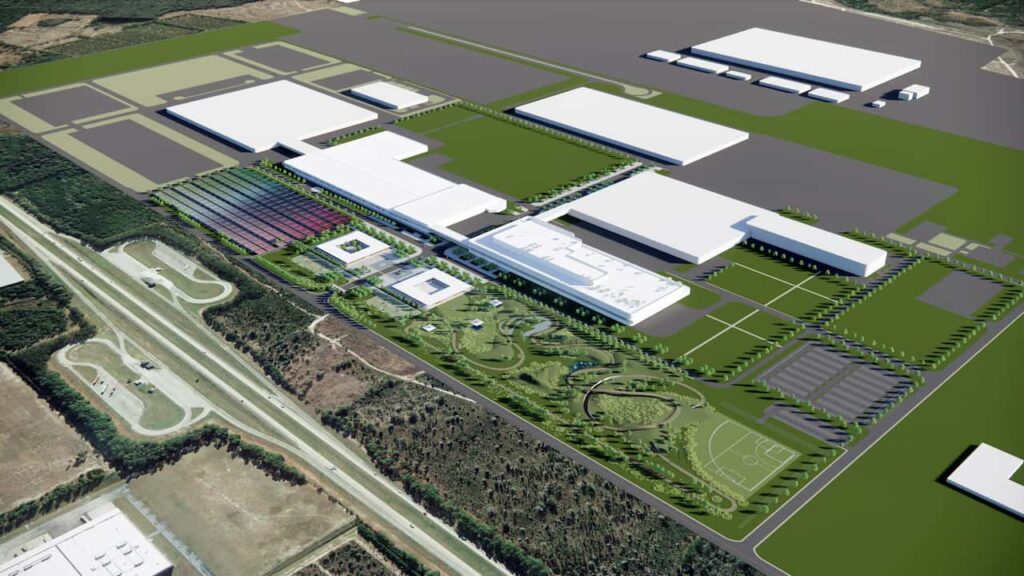
On October 25, 2022, HMG held the groundbreaking ceremony for the upcoming dedicated EV and battery plant at the Bryan County Megasite. A newly established Group company called ‘Hyundai Motor Group Metaplant America (HMGMA)’ is in charge of operations.
The HMGMA plant will have an annual production capacity of 300,000-500,000 electric vehicles. Commercial production will begin in Q4 2024, starting with the 2025 Hyundai Ioniq 5, followed by the Ioniq 9, as confirmed at the 2024 CEO Investor Day, on August 28, 2024. On January 4, 2023, Randy Parker, CEO, Hyundai Motor America, said the company is on its way to achieving its goal of commencing production on time, Bryan County News reported the same day.
Release Date
In an announcement on October 29, 2024, Hyundai confirmed that it will hold the debut of the Ioniq 9 in November. It’s likely that the debut could be completed at the LA Auto Show, which opens on November 21, 2024, for the media. American dealerships should start receiving the first shipments in Q2 2025 (April-June 2025).
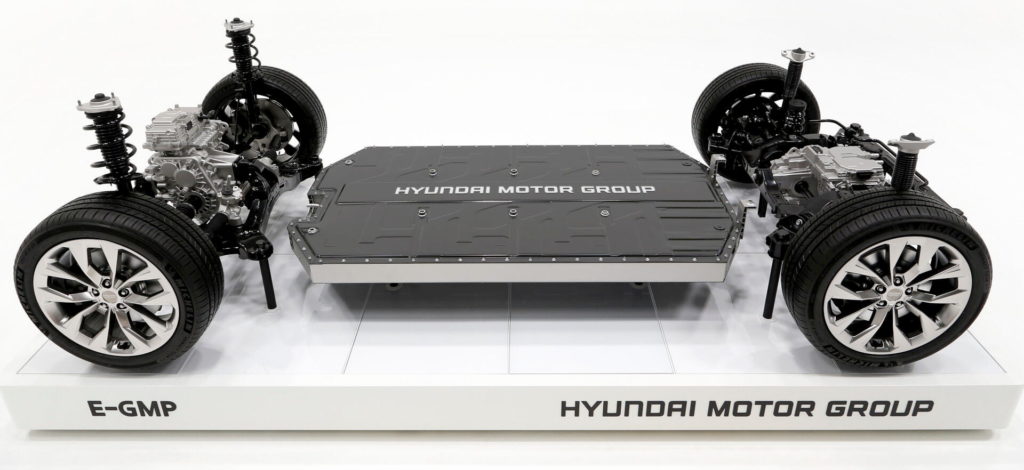
The U.S. has the potential to be the Ioniq 9’s biggest market, but for European countries, the flagship Hyundai EV won’t be a major launch. Automotive News Europe asked Michael Cole, President and CEO of Hyundai’s European division, in August 2022, if the Ioniq 9 would be a smaller volume model than the Ioniq 5 and the Ioniq 6. Cole said that the company doesn’t plan to sell the Ioniq 9 in big numbers as it is a large SUV.
Ioniq 9 subscription & Free charging
HMG has confirmed that American Hyundai dealers will offer an Ioniq subscription service in the future. The Ioniq 9 should be available to subscribe to in the U.S. An all-inclusive monthly payment would cover the vehicle, insurance, and maintenance costs and provide customers with a more convenient, low-risk way of owning their preferred Ioniq model. The subscription tenure options could start from one month.
Customers of the Hyundai Ioniq 9 could be offered one or two years of free unlimited 30-minute charging sessions. Hyundai, Kia, BMW Group, Mercedes-Benz Group, GM, Honda, Stellantis, and Toyota have a joint venture to create a high-power charging network consisting of no less than 30,000 chargers compatible with EVs having a Combined Charging System (CCS) or North American Charging Standard (NACS) port in North America. Called ‘Ionna,’ this company expects to open the first charging station in the U.S. in 2024 and Canada at a later stage.
TopElectricSUV says
The Ioniq 9 will be the largest and most high-tech model in the brand’s history. Expected to be made in America in subsequent model years, the electric SUV should provide excellent value for money and sure-shot attractions like advanced connectivity, charging and safety technologies, futuristic design, and a spacious interior.
Among the first affordable electric family SUVs, American customers asking for a premium Palisade should find the Ioniq 9 attractive. The SUV would even draw Ford Explorer, Toyota Highlander, and Honda Pilot owners planning to go zero-emissions.
Hyundai Ioniq 9 FAQs
What is the Hyundai Ioniq 9’s release date?
The 6/7-seater electric SUV is expected to be launched in the U.S. in Q2 2025 (April-June 2025).
What would be considered the Hyundai Ioniq 9 rivals?
What will be Hyundai Ioniq 9’s price?
The Ioniq 9’s price should start at around 55,000.
Featured image: TopElectricSUV’s rendition of the Ioniq 9.

I got my Master’s in Business Management & Administration and have been an International Automotive News Editor since 2014. I’ve traveled to global motor shows and automotive events, driven various types of vehicles, and focused on hybrid and electric cars in the last 4 years.


